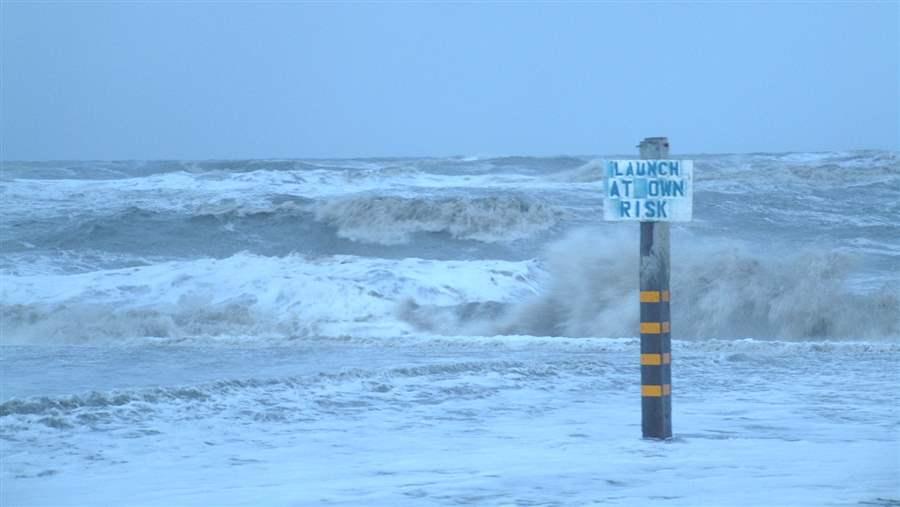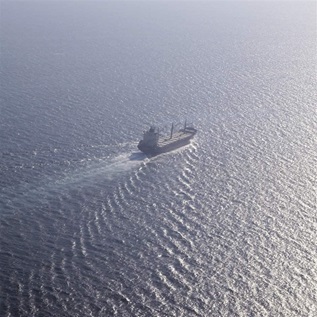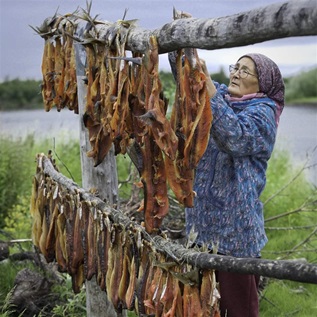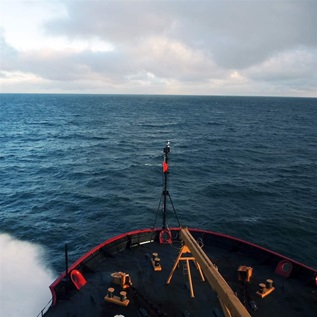Response Gap
The environmental, oceanographic and climatic conditions in the Arctic Ocean represent a challenge to existing oil spill cleanup technologies.
Most oil spill response systems and equipment were developed for use in open (up to 10 percent ice-covered) waters and have been adapted over time to try to accommodate Arctic conditions. Those conditions can include varying concentrations and formations of sea ice, as well as dense fog, sub-zero temperatures, high winds, months of darkness and other elements that make any on-water operations challenging.
 © Earth System Research Labratory, NOAA
© Earth System Research Labratory, NOAA"Launch At Own Risk" Storm in Barrow, Alaska
The federal government’s Minerals Management Service acknowledges this fact, and the U.S. Coast Guard goes a step further and states that oil boom and skimmers are unproven where sea ice is present. The oil industry and Alaska Clean Seas, the North Slope’s oil spill cleanup organization, acknowledge these limits exist. But as of yet, no one has quantified these limits by doing what is called a “response gap analysis."
”A “response gap” exists whenever environmental conditions exceed the operating limits of oil spill cleanup equipment. That means if a spill occurs during these conditions, it could not be contained or cleaned up. The term “response gap” is relatively new to the published literature and there has been confusion about the term’s meaning and how it relates to other oil spill planning and response concepts.
A response gap estimate – typically expressed as a percentage -- has nothing to do with the percentage of oil that could be recovered. When you say that a response gap exists 65 percent of the time at a given location, you mean that 65 out of 100 days no response would be conducted if an oil spill occurred because of logistical problems, safety issues and/or other practical concerns. And in a best case scenario, oil spill response on the remaining 35 days might recover 10 or 15 percent of the total volume of oil spilled (based on typical estimates of open water recovery efficiencies for mechanical equipment).
The response gap means that there are periods of time during which spilled oil would be left completely untreated. This information is critical to understanding and assessing the risk of oil spills from a given operation or location. It may mean that significant additional mitigation measures should be put in place during those times when an oil spill could not be cleaned up. For example, some oil and gas production operations are limited to certain seasons and may be curtailed during critical biological periods.
The methodology for conducting an Arctic Oil Spill response gap analysis involves three key steps:
- Quantify the operating limits of offshore oil spill response systems available in the Arctic. This process starts by looking at one or more offshore spill response systems (equipment, vessels and personnel) and then considering the upper operating limits of that system. That is determined by the component or components that are most likely to fail once a given condition (sea state, ice coverage, visibility, temperature, wind) is exceeded, rendering the response system inoperable.
- Calculate the frequency that one or more of the operating limits is reached in the area of operations. Historical weather data and observations are analyzed to determine how frequently each of the limiting factors occurs during the operating season. If historical data is not available, it may be modeled. Assuming that multiple factors would limit Arctic offshore spill response, the analysis would also have to consider the interplay among factors to account for cumulative impacts. For example, the combination of 10 percent ice coverage and less than one nanometer visibility may present an operating limit even though individually neither factor would.
- Estimate the response gap by applying the operating limits to the environmental dataset. The result of this analysis will characterize the frequency of occurrence of one or more environmental factors that would render oil spill cleanup possible, impaired or impossible. Such an analysis completed in Prince William Sound Alaska in 2007 showed that during the winter season at one offshore location, a response gap(impossible to clean up the spill using existing technologies) existed 65 percent of the time.
There is no question that a response gap exists in the Arctic. Once that gap has been assessed, additional oil spill prevention or mitigation measures can be put into place to reduce the likelihood of an uncontrolled oil spill.






